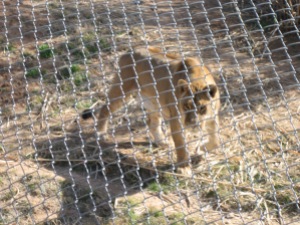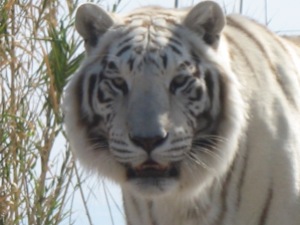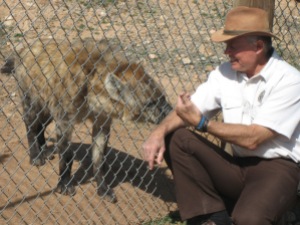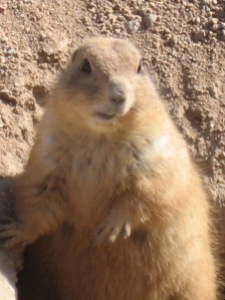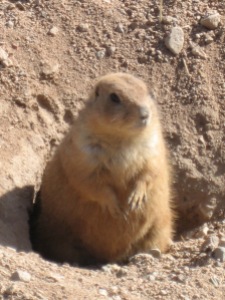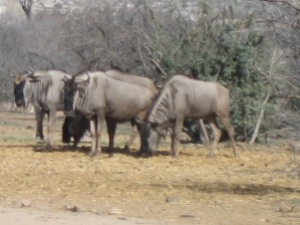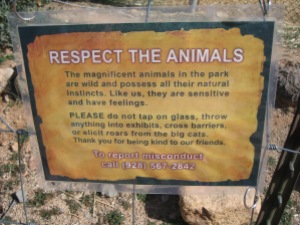Today’s guest post comes to you from James Redden of the hiking and outdoor gear review website TrekSumo. James recently hiked Lake Baikal in Russia and lived to tell the tale. In this post, he’ll tell the tale to you.

Lake Baikal, Russia. One mile deep and 400 miles long. Between January and March every year the surface freezes up to a metre (3.28 feet) deep. Explorers venture onto the ice as they seek to traverse the full length, or dash across the 50km (31 miles) width of this vast expanse of water.
This is Adventureland – what could go wrong? A lot. Let me explain.
My Love of Cold Places
I’m a former soldier with 13 years service under my belt. During my time in the British Army I came to love the Arctic training packages my unit attended every year. The journey from the UK took us across the seething North Sea, up the spine of Norway and into the Arctic Circle near Poersanger.
Brutal temperatures bit deep. At times the thermometer nudged -30C (-22F). But it was okay, our equipment was designed to keep us warm.
I was smitten.
After leaving the Army I spent some time finding my place in civilian life. Office work beckoned. Memories of Norway clung to me. After a couple of years, I decided to work on my neglected fitness. In what felt like no time I had completed ultra-marathons, several Spartan races, and many long hikes.
More. I wanted more.
The next steps were easy decisions to make.
North Pole – 2015
Not a full distance ski, but far enough to experience the thrill of a truly extreme environment. And appreciate what the world is losing. I joined a team and we spent two weeks skiing across the frozen ice cap, reaching the Geographic North Pole 16 days after my 44th birthday.
Norway Ski – 2016
Next came a trip to Norway. Covering 250km (155 miles) in 8 ½ days was hard work. High temperatures and unseasonal rain made progress slow and arduous. Over the course of the trip I lost a significant amount of weight and suffered the misery of extreme fatigue.
Norway Ski – 2017
A shorter trip this time round. Only around 100km (62 miles) in four days, in part due to an injury received on the first day. A small tear in an abductor muscles left me in agony.
Greenland Crossing – 2018
Success! No illness, just a 600km (372 miles) ski along the Nansen route that cuts across this gargantuan island sat halfway across the Atlantic Ocean. I joined 5 others, some of them former Army colleagues, and we skied into some of the harshest weather seen or experienced for about 10 years. The crossing was a joy – apart from my near-death experience!
2019 was a quiet year for me. A plan to solo to the South Pole was shelved due to lack of funding. Looking at maps in search of possible destinations, my mind was drawn to Russia. Lake Baikal beckoned.
The trip wasn’t expected to be too taxing. After all, I’d completed several tough expeditions – how hard could Baikal be?
The Journey to Lake Baikal
My flight left on the 14th February 2020. Valentine’s Day was celebrated 24 hours earlier. Landing in Irkutsk on the 16th February was a surreal experience. Monuments to Soviet heroes still dominate civic buildings, the city center has what felt to me like a harsh and alien vibe. How wrong I was.
I’d heard that many Russians are harsh, unsmiling characters. All those I came across were friendly, helpful (even if we couldn’t understand each other).
One night in a hotel.
My gear packed.

An early start.
Crossing Lake Baikal – the seed of an idea – started a year prior to the 16th February 2020. But that time had flown by. I sat in a car, talking to Eugene (owner of A – B Tours, the logistics company that did the heavy lifting and administrative tasks required to get me to the start point) as we headed to Kultuk, the traditional starting point for the traverse.
A mild chill raced into the car every time a window was opened. Cold weather thrills me. The climate didn’t seem quite chilly enough for my liking. That was the first complacency.
2 ½ hours after setting off, Eugene helped me drag my 60Kg (132 pounds) from the back of his van and onto the ice. He took a couple of photos, wished me luck and departed.
Game on.
Before we move on, anyone planning a similar crossing of Lake Baikal should check out the post I wrote about my hike there with tips for hikers. All of the tips offered were learned during my 400 mile winter run/hike/ski traverse of this vast expanse of frozen water.
The Perils and Trials of Crossing Lake Baikal
You came here to read stories of man vs Mother Nature, of fear and uncertainty in an alien environment. So far, you’ve read a meandering, placid tale of one man’s journey into the wilds of Siberia.
Bear with me. We’re about to delve deeper.
Is It Possible to Haul Gear with Ankle Injuries?
60Kg of food, fuel and protection from the elements. Seems a fairly light weight when you’re traveling across ice. The task becomes infinitely harder when you start to pick up injuries.
Day 1, 10km (6 miles) out from Kultuk, the snow thinned. Movement was easy. Ridiculously easy.
I decided to jog, if only for a short distance.
My Merrell Moab 2 boots were ideal for this kind of work. Lightweight, with great ankle support, they gave me a sense of sure-footedness as I dashed across the ice.
Nature – or ill-luck – waits at every junction, in every pothole hidden by a thin cloak of snow.
We all know that feeling that something is about to go wrong. A sixth sense that predicts our, only our, misfortune.
Alarm bells rang. I fell.
Pain radiated out from my left ankle. Half a kilometre later, as night closed in, I hobbled to a halt and erected my tent.
For several days the injury slowed my progress. By day 5 the swelling eased off, and I felt ready to attempt an easy jog. Easy? The pace was excellent – nearly 6 miles per hour – and only mild niggling pain from my left ankle.
There was one issue. Compensation. To relieve the pressure on my left ankle my body had compensated – an invisible and instinctive reaction of which I was not aware – by shifting weight to my uninjured leg. My right shin and ankle ballooned.
Pain was a constant companion for the remainder of the journey. At times it was little more than an irritation, but on some days I had to take regular breaks to pop pain killers and rest.
Yes, it is possible to haul a pulka with ankle injuries. You just need to accept there will be pain, then ask yourself how much your journey means to you.
What could be worse than this? Well…
Filth. And the Effects of Mild Food Poisoning
5 years’ experience of hiking, skiing and trekking in arduous environments. That’s a good deal of experience in anyone’s eyes. My own back catalogue of adventures extends way back into my teens. That’s over 30 years of knowledge stored and available to me and anyone else who cares to listen.
Experience only matters when you pay close attention to the details.
6 days into the traverse of Lake Baikal, my right ankle grumbling in the dark cocoon of my tent, and a new sensation stirred.
I knew this one well.
In seconds, I had burst out of my sleeping bag, ripped open the flysheet zip and was outside relieving the pressure in my abdomen. Oh, the pain.
Some people revel in the details. Let’s leave those out of this tale.
Stomach cramps pulled me doubled over. The cold, normally my friend and constant traveling companion, multiplied the misery. Every step amplified the stabs of pain – the waistband of my pulka harness pressed hard on my abdomen.
For five days the discomfort and pain were all too apparent, only fading after I’d finished the crossing.
Looking back, I realize the most likely cause of the food poisoning was the interesting build-up of grey food under the rim of my thermo cup.
That was the most painful experience during my time on Lake Baikal, but what about the wildlife…?
He Who Doesn’t Dance with Wolves
Lake Baikal is home to a dizzying number of animals, in part due to the protection inherited from living in, or near, a national park.
Before heading over to Russia, I’d received warnings that bears and wolves stalked the ice. Planning how to fend off an attack was my initial response. “Would a bear take any notice if I started beating it with one of my hiking boots?” Unlikely.
Running fast seemed like a better option. I’m 48, but keep myself very fit. The reasoning in my mind was that maybe a dash across the ice, heading away from the bear would work. Ultimately, there was no need to test my theory as the bears were still hibernating.
Wolves are a different prospect, as I discovered.
Day 8. Clouds gather and darkness spreads. Nightfall shifts across the land. I’m trudging through deep now, my legs tired and my glutes a raging inferno. Soon it will be time to pitch my tent and cook up another evening meal.
Something catches my eye. A movement to my left.
Blurred shapes bounced and raced across the ice. At first, I assumed they were children from a nearby village, but soon realized the nearest habitation was about 8km (5 miles) away.
It was at this point I decided to move away from the loping shapes. As I moved off sounds rolled across the ice. I’ve seen wolves up close, but only in the zoo, and heard their bark-growl. A sense of urgency insisted that I move faster. Run, whilst dragging a 60Kg pulka.
After a while, I paused and looked back over my shoulder. The bounding figures were moving off in the opposite direction. They had no interest in me.
Meeting some of Baikal’s wildest inhabitants would have been a truly amazing experience. But I’m happy to keep those with very pointy teeth at a good distance.
And The Trials Kept On Coming
Lake Baikal is a beautiful and harsh mistress. Her icy embrace is a warning, one we would do well to heed.
I saw wolves, traveled nearly the full distance carrying ankle injuries and experienced the searing jabs of food poisoning. Yet there was more.
Temperatures of -20C (-4F), driven lower by the Siberian wind chill are a constant reminder that the extremities should always be protected. At times I was a little slow to heed that warning and paid a price…

At night the ice creaked and groaned, fractured as the immense plates pressed against one another. Periodically the ice would shift underfoot and sending me crashing to the ground, waiting for the plate to flip me over into the frigid waters.
Luck favored me. I remained dry for the entire journey.
Heat, or the contrast between hot and cold, was another unwelcome companion. During the day the sun climbed, beat down and forced me to remove layers of clothing in order to prevent overheating. Then nature spun the wheel, clouds gathered and the deep chill returned.
Clothes were quickly pulled on, but the cold had already found its way deep into my muscles. For a while, until my legs were once again warm, I shambled unsteadily over the ice.
Do You Want to Hike Lake Baikal?
Don’t let my story put you off attempting the 400 mile traverse. Lake Baikal is a place of mystery and beauty. Danger and thrills await intrepid hikers and explorers.
As a destination, I can wholeheartedly recommend Lake Baikal although I would give you one word of warning: seek guidance before you set off.
About the Author
James Redden is a former soldier in the British Army who now owns a technology company. In his spare time he travels to the most extreme and arduous destinations on the plane with the he aim to raise awareness and funds for mental health charities. When not working in IT, traveling and giving public talks James can be found working on his new hiking and outdoor gear review website TrekSumo.
The author provided the photos for this post.


